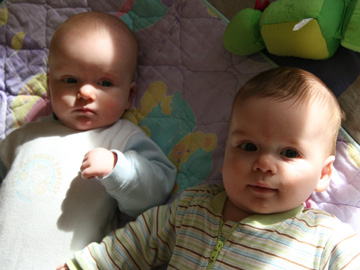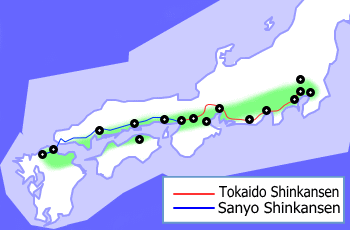|
Who's Your City
''Who's Your City?: How the Creative Economy Is Making Where You Live the Most Important Decision of Your Life'' is a non-fiction book written by Richard Florida. The book advances Florida's previous work on the locational choices of people and businesses. He adds a dimension of environmental psychology by assigning psychological profiles to urban regions according to the dominant personality traits of the people who live there. For example, the New York metropolitan area and the ChiPitts area have the highest concentration in the United States of people whose dominant personality trait is neuroticism. The book ends with a ten step guide to choosing a location best suited to the reader's personality and life situation. Since the 2002 publication of '' The Rise of the Creative Class'', Florida has enjoyed academic and commercial success in his study and promotion of the concept of a creative class, or a cohort of highly innovative, highly creative individuals who are sought after ... [...More Info...] [...Related Items...] OR: [Wikipedia] [Google] [Baidu] |
Richard Florida
Richard L. Florida is an American urban studies theorist focusing on social and economic theory. He is a professor at the Rotman School of Management at the University of Toronto and a Distinguished Fellow at NYU's School of Professional Studies. Florida received a PhD from Columbia University in 1986. Prior to joining George Mason University's School of Public Policy, where he spent two years, he taught at Carnegie Mellon University's Heinz College in Pittsburgh from 1987 to 2005. He was named a Senior Editor at ''The Atlantic'' in March 2011 after serving as a correspondent for TheAtlantic.com for a year. Early life and education Florida was born in Newark, New Jersey. He graduated from Rutgers College in 1979 with a B.A. in political science. He then attended Columbia University, where he studied urban planning (M.Phil. in 1984 and Ph.D. in 1986). Research and theories Florida is best known for his concept of the creative class and its implications for urban regeneration ... [...More Info...] [...Related Items...] OR: [Wikipedia] [Google] [Baidu] |
University Of Toronto
The University of Toronto (UToronto or U of T) is a public research university in Toronto, Ontario, Canada, located on the grounds that surround Queen's Park. It was founded by royal charter in 1827 as King's College, the first institution of higher learning in Upper Canada. Originally controlled by the Church of England, the university assumed its present name in 1850 upon becoming a secular institution. As a collegiate university, it comprises eleven colleges each with substantial autonomy on financial and institutional affairs and significant differences in character and history. The university maintains three campuses, the oldest of which, St. George, is located in downtown Toronto. The other two satellite campuses are located in Scarborough and Mississauga. The University of Toronto offers over 700 undergraduate and 200 graduate programs. In all major rankings, the university consistently ranks in the top ten public universities in the world and as the top university ... [...More Info...] [...Related Items...] OR: [Wikipedia] [Google] [Baidu] |
Agreeableness
Agreeableness is a personality trait manifesting itself in individual behavioral characteristics that are perceived as kind, sympathetic, cooperative, warm, and considerate. In contemporary personality psychology, agreeableness is one of the five major dimensions of personality structure, reflecting individual differences in cooperation and social harmony. People who score high on this dimension are empathetic and altruistic, while a low agreeableness score relates to selfish behavior (often manifesting as stinginess) and a lack of empathy. Those who score very low on agreeableness show signs of dark triad behavior such as manipulation and competing with others rather than cooperating. Agreeableness is considered to be a superordinate trait, meaning that it is a grouping of personality sub-traits that cluster together statistically. The lower-level traits, or facets, grouped under agreeableness are: trust, straightforwardness, altruism, compliance, modesty, and tender-mindedne ... [...More Info...] [...Related Items...] OR: [Wikipedia] [Google] [Baidu] |
Big Five Personality Traits
The Big Five personality traits is a suggested taxonomy, or grouping, for personality traits, developed from the 1980s onward in psychological trait theory. Starting in the 1990s, the theory identified five factors by labels, for the US English speaking population, typically referred to as: * openness to experience (inventive/curious vs. consistent/cautious) *conscientiousness (efficient/organized vs. extravagant/careless) * extraversion (outgoing/energetic vs. solitary/reserved) * agreeableness (friendly/compassionate vs. critical/rational) * neuroticism (sensitive/nervous vs. resilient/confident) When factor analysis (a statistical technique) is applied to personality survey data, it reveals semantic associations: some words used to describe aspects of personality are often applied to the same person. For example, someone described as conscientious is more likely to be described as "always prepared" rather than "messy". These associations suggest five broad dimensions used i ... [...More Info...] [...Related Items...] OR: [Wikipedia] [Google] [Baidu] |
Map Of USA Highlighting Sun Belt
A map is a symbolic depiction emphasizing relationships between elements of some space, such as Physical body, objects, regions, or themes. Many maps are static, fixed to paper or some other durable medium, while others are dynamic or interactive. Although most commonly used to depict geography, maps may represent any space, real or fictional, without regard to Context (language use), context or Scale (map), scale, such as in brain mapping, DNA mapping, or computer network topology mapping. The space being mapped may be two dimensional, such as the surface of the earth, three dimensional, such as the interior of the earth, or even more abstract spaces of any dimension, such as arise in modeling phenomena having many independent variables. Although the earliest maps known are of the heavens, geographic maps of territory have a very long tradition and exist from ancient times. The word "map" comes from the , wherein ''mappa'' meant 'napkin' or 'cloth' and ''mundi'' 'the world'. ... [...More Info...] [...Related Items...] OR: [Wikipedia] [Google] [Baidu] |
The Gallup Organization
Gallup, Inc. is an American analytics and advisory company based in Washington, D.C. Founded by George Gallup in 1935, the company became known for its public opinion polls conducted worldwide. Starting in the 1980s, Gallup transitioned its business to focus on providing analytics and management consulting to organizations globally. In addition to its analytics, management consulting, and Gallup Poll, the company also offers educational consulting, the StrengthsFinder, CliftonStrengths assessment and associated products, and business and management books published by its Gallup Press unit. Organization Gallup is a private, employee-owned company based in Washington, D.C. Its headquarters is located at The Gallup Building. It maintains between 30 and 40 offices globally, including offices at the Gallup Riverfront Campus in Omaha, Nebraska, and has about 2,000 employees. Jon Clifton is Gallup's CEO. Gallup, Inc. has no affiliation with Gallup International Association, Gallup In ... [...More Info...] [...Related Items...] OR: [Wikipedia] [Google] [Baidu] |
Multiplier (economics)
In macroeconomics, a multiplier is a factor of proportionality that measures how much an endogenous variable changes in response to a change in some exogenous variable. For example, suppose variable ''x'' changes by ''k'' units, which causes another variable ''y'' to change by ''M'' × ''k'' units. Then the multiplier is ''M''. Common uses Two multipliers are commonly discussed in introductory macroeconomics. Commercial banks create money, especially under the fractional-reserve banking system used throughout the world. In this system, money is created whenever a bank gives out a new loan. This is because the loan, when drawn on and spent, mostly finishes up as a deposit back in the banking system and is counted as part of money supply. After putting aside a part of these deposits as mandated bank reserves, the balance is available for the making of further loans by the bank. This process continues multiple times, and is called the multiplier effect. The multiplier may v ... [...More Info...] [...Related Items...] OR: [Wikipedia] [Google] [Baidu] |
Taiheiyō Belt
The , also known as the Tōkaidō corridor, is the megalopolis in Japan extending from Ibaraki Prefecture in the northeast to Fukuoka Prefecture in the southwest, running for almost . Its population is about 74.7 million. The urbanization zone runs mainly along the Pacific coast (hence the name) of Japan from Kantō region to Osaka, and the Inland Sea (on both sides) to Fukuoka, and is concentrated along the Tōkaidō- Sanyō rail corridor. A view of Japan at night clearly shows a rather dense and continuous strip of light (demarcating urban zones) that delineates the region. The high population is particularly due to the large plains – the Kantō Plain, Kinai Plain, and Nōbi Plain – which facilitate building in mountainous Japan. Although the Taiheiyō Belt contains the majority of Japan's population, references to the term in Japanese are mainly economic or regional in nature. The term was first used in 1960 in an Economic Commission Subcommittee Report formed to doub ... [...More Info...] [...Related Items...] OR: [Wikipedia] [Google] [Baidu] |
Thomas Friedman
Thomas Loren Friedman (; born July 20, 1953) is an American political commentator and author. He is a three-time Pulitzer Prize winner who is a weekly columnist for ''The New York Times''. He has written extensively on foreign affairs, global trade, the Middle East, globalization, and environmental issues. Early life and education Friedman was born on July 20, 1953, in Minneapolis, Minnesota, the son of Margaret Blanche (née Phillips) and Harold Abe Friedman. Harold, who was vice president of a ball bearing company, United Bearing, died of a heart attack in 1973 when Tom was nineteen years old. Margaret, who served in the United States Navy during World War II and studied Home Economics at the University of Wisconsin, was a homemaker and a part-time bookkeeper. Margaret was also a Senior Life Master duplicate bridge player, and died in 2008. Friedman has two older sisters, Shelly and Jane. From an early age, Friedman, whose father often took him to the golf course for a round ... [...More Info...] [...Related Items...] OR: [Wikipedia] [Google] [Baidu] |
San Francisco Bay Area
The San Francisco Bay Area, often referred to as simply the Bay Area, is a populous region surrounding the San Francisco, San Pablo, and Suisun Bay estuaries in Northern California. The Bay Area is defined by the Association of Bay Area Governments to include the nine counties that border the aforementioned estuaries: Alameda, Contra Costa, Marin, Napa, San Mateo, Santa Clara, Solano, Sonoma, and San Francisco. Other definitions may be either smaller or larger, and may include neighboring counties that do not border the bay such as Santa Cruz and San Benito (more often included in the Central Coast regions); or San Joaquin, Merced, and Stanislaus (more often included in the Central Valley). The core cities of the Bay Area are San Francisco, San Jose, and Oakland. Home to approximately 7.76 million people, Northern California's nine-county Bay Area contains many cities, towns, airports, and associated regional, state, and national parks, connected by a comp ... [...More Info...] [...Related Items...] OR: [Wikipedia] [Google] [Baidu] |
BosWash
BosWash is a name coined by futurist Herman Kahn in a 1967 essay describing a theoretical United States megalopolis extending from the metropolitan area of Boston to that of Washington, D.C.The term ''BosWash'' first appeared in a 1967 publication of predictions for the future by the Hudson Institute: The publication coined terms like ''BosWash'', referring to predicted accretions of the Northeast, and '' SanSan'' (San Francisco to San Diego) for the urbanized region in Coastal California. The general concept for the area described by ''BosWash'' was first identified (with the name "Megalopolis") as "The Atlantic seaboard area from north of Boston to south of Washington" by French geographer Jean Gottmann in the annual report of the Twentieth Century Fund on May 25, 1958. Gottman elaborated on the stretch of cities in his 1961 book ''Megalopolis: The Urbanized Northeastern Seaboard of the United States'', although the term ''BosWash'' did not appear in the work. BosNYWash i ... [...More Info...] [...Related Items...] OR: [Wikipedia] [Google] [Baidu] |
The Globe And Mail
''The Globe and Mail'' is a Canadian newspaper printed in five cities in western and central Canada. With a weekly readership of approximately 2 million in 2015, it is Canada's most widely read newspaper on weekdays and Saturdays, although it falls slightly behind the ''Toronto Star'' in overall weekly circulation because the ''Star'' publishes a Sunday edition, whereas the ''Globe'' does not. ''The Globe and Mail'' is regarded by some as Canada's " newspaper of record". ''The Globe and Mail''s predecessors, '' The Globe'' and ''The Mail and Empire'' were both established in the 19th century. The former was established in 1844, while the latter was established in 1895 through a merger of ''The Toronto Mail'' and the ''Toronto Empire''. In 1936, ''The Globe'' and ''The Mail and Empire'' merged to form ''The Globe and Mail''. The newspaper was acquired by FP Publications in 1965, who later sold the paper to the Thomson Corporation in 1980. In 2001, the paper merged with broadcast ... [...More Info...] [...Related Items...] OR: [Wikipedia] [Google] [Baidu] |









